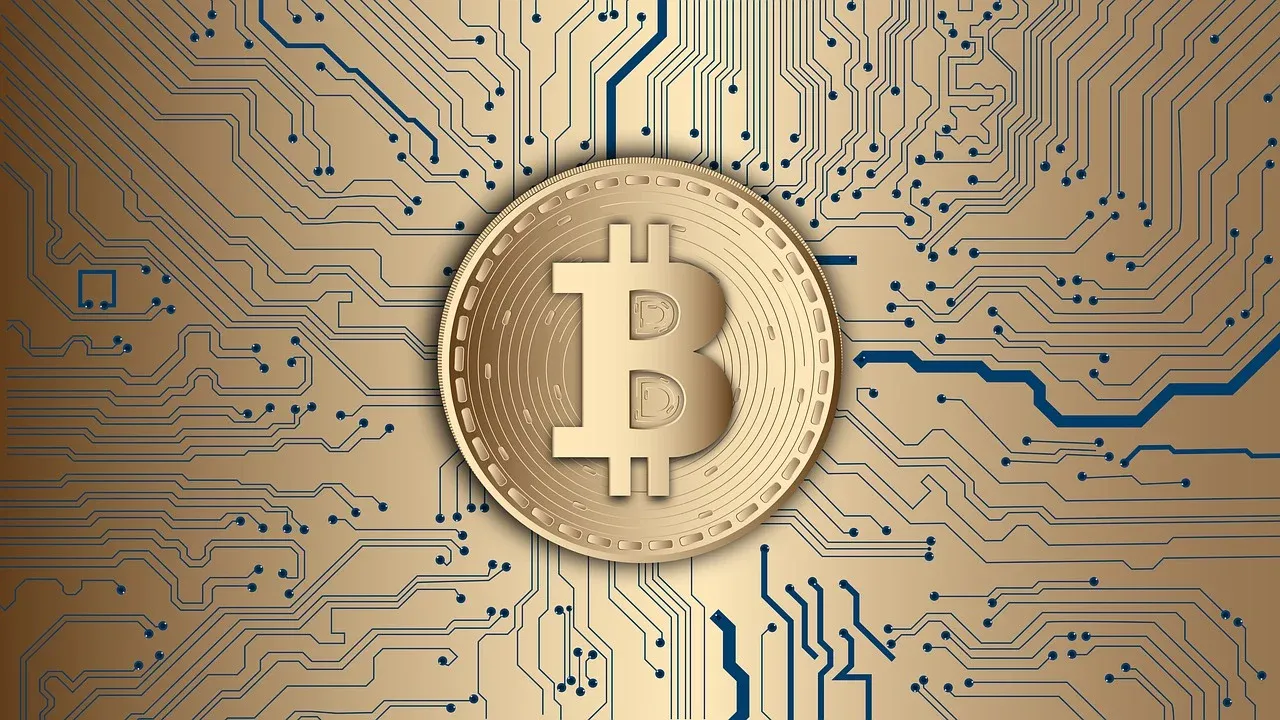The rise of cryptocurrencies has changed the way we look at and think about money and transactions. From humble beginnings to a global phenomenon, crypto has come a long way. It now offers a decentralized, secure, and efficient alternative to traditional fiat currency.
Exit fiat, save in #Bitcoin pic.twitter.com/OitgSyOaVq
— Bitcoin Magazine (@BitcoinMagazine) April 28, 2024
In this piece, we will take an interesting journey back in time, exploring the changes in purchasing power i.e. what you could purchase then and now, all while comparing fiat currency to cryptocurrency.
What we could do with both in the past and later on examine the present too. Then, we will take a most important gaze into the future, highlighting the advantages and limitations of both fiat and crypto.
What is Fiat?
Fiat is a term used to describe traditional currency, issued and regulated by governments or central banks; it has been the backbone of global economies for centuries. Its value is derived from government decrees and trust in the issuing authority.

Fiat is issued and regulated by governments or central banks. The word "fiat" comes from the Latin phrase "fiat lux," meaning "let there be light," and was first used in the context of currency in the 17th century. From bartering to gold standards, fiat currency has evolved significantly over time.
Features of Fiat:
- Government-backed: Fiat is issued and guaranteed by governments or central banks, who control its supply and value.
- Centralized: It is not backed by any physical commodity, but rather by the government's promise to honor it.
- Limited supply: It usually has a limited supply, controlled by central banks to manage inflation and economic stability.
- Widely accepted: Fiat is widely accepted as a medium of exchange, unit of account, and store of value.
Examples of Fiat:

- US Dollar (USD)
- Euro (EUR)
- Japanese Yen (JPY)
- British Pound (GBP)
- Chinese Renminbi (RMB)
- Nigerian Naira (NGN)
How Fiat Works:
- Central banks control the money supply by printing or digitally creating new currency.
- Commercial banks accept deposits and make loans, creating new money in the process.
- Governments use fiat currency to pay for public expenses, debts, and services.
- Individuals use fiat currency for everyday transactions, savings, and investments.
Advantages of Fiat:
- Stability: It is generally more stable than alternative currencies.
- Widespread acceptance: It is also widely accepted and trusted.
- Regulatory framework: Fiat generally operates within established regulatory frameworks.
The Problems with Fiat:
Fiat, although being issued and regulated by governments, has several limitations and problems, including:
- Inflation: Fiat currency can be devalued by inflation, reducing its purchasing power.
- Centralized control: Governments and institutions control fiat currency, potentially leading to manipulation and censorship.
- Limited accessibility: Fiat currency can be inaccessible to marginalized communities, particularly in developing countries.
- High transaction fees: Traditional payment systems often come with high transaction fees.
- Slow processing times: Fiat transactions can be slow, especially for international payments.
- Security risks: Fiat is vulnerable to counterfeiting and fraud.
- Interest rates and debt: most times, it is subject to interest rates and debt, potentially leading to economic instability.
- Currency devaluation: It can also be devalued by economic or political events, affecting its value.
- Limited supply: It usually has a limited supply, potentially leading to scarcity and economic constraints.
- Lack of transparency: Fiat transactions can be opaque, making it difficult to track and verify transactions.
These limitations have led to the development of alternative currencies like cryptocurrencies, which aim to address these issues and provide a more decentralized, secure, and efficient medium of exchange.
The Rise of Cryptocurrencies
Cryptocurrencies, led by Bitcoin, emerged as a new form of digital money in 2009. Unlike fiat currencies, cryptocurrencies operate on decentralized blockchain technology, eliminating the need for intermediaries and offering potential benefits like faster transactions, lower fees, and increased accessibility.

Consider Bitcoin, the first and most well-known cryptocurrency. In its early days, 10,000 Bitcoins (about $40 then) were used to purchase two papa john's pizzas in what is now known as the first real-world Bitcoin transaction. Today, with Bitcoin's price at a little over $60,000, those same 10,000 Bitcoins ($600,000,000+) could buy much more than just pizzas. This dramatic increase in value illustrates the potential of cryptocurrencies as a store of value and a medium of exchange.
In essence, cryptocurrency is a decentralized digital currency that uses cryptography for security and transactions. Bitcoin heralded that charge and since then, hundreds of altcoins have emerged. Cryptocurrencies operate independently of central banks and governments, which often offers a new level of financial freedom.
Advantages of Cryptocurrency
Cryptocurrency offers several advantages over fiat
- Speed and Efficiency: Crypto transactions are processed in real-time, regardless of borders or time zones.
- Low Fees: Transaction fees are significantly lower compared to traditional payment systems.
- Security and Transparency: Cryptocurrency transactions are secure, immutable, and publicly visible.
- Financial Inclusion: Crypto offers access to financial services for the underserved and unbanked populations.
- Autonomy and Decentralization: Crypto operates independently of central banks and governments.

However, cryptocurrencies, like any other financial system, have their own set of challenges and limitations. Some of the problems with cryptocurrencies include:
- Security risks: Cryptocurrencies are vulnerable to hacking, theft, and fraud, particularly if users don't follow security best practices.
- Environmental impact: Cryptocurrency mining consumes significant energy resources, contributing to environmental concerns.
- Illegal activities: Cryptocurrencies have been linked to illegal activities like money laundering, drug trafficking, and terrorist financing.
- Lack of consumer protection: Cryptocurrency transactions are often irreversible, leaving users vulnerable to fraud and scams.
- Technical complexity: Cryptocurrencies require a level of technical expertise, potentially excluding those without the necessary knowledge.
- Market manipulation: Cryptocurrency markets can be manipulated by large holders or groups, potentially leading to market instability.
- Wallet security: Cryptocurrency wallets can be vulnerable to hacking and theft if not properly secured.
- Private key management: Losing or compromising private keys can result in the loss of cryptocurrency funds.
- Exchange risks: Cryptocurrency centralized or decentralized exchanges can be vulnerable to hacking, theft, and fraud.
“Fuck the system!!!!”
— T (@TorayKortan) May 10, 2021
*stores Crypto on a centralised exchange*
- Taxation and accounting: Cryptocurrencies raise complex taxation and accounting questions, potentially leading to legal and financial issues.
Despite these challenges, cryptocurrencies continue to evolve and improve, addressing these present issues and offering innovative financial solutions.
The Changes in Purchasing Power of Crypto & Fiat
While fiat currencies are subject to inflation, which erodes their purchasing power over time, cryptocurrencies offer a solace to that predicament. Many cryptocurrencies, like Bitcoin, have a limited supply (21 million Bitcoins), which can potentially hedge against inflation. However, it's important to note that cryptocurrencies are highly volatile, and their value can fluctuate widely, impacting their purchasing power.
#Bitcoin is for the money you can't afford to lose.pic.twitter.com/vaIzWh3KnA
— Michael Saylor⚡️ (@saylor) April 30, 2024
For example, in March 2010, one Bitcoin was worth less than $0.01. As of writing, one Bitcoin is worth more than sixty thousand dollars ($60,000). This dramatic increase in value has significantly changed what one Bitcoin can purchase. In the early days, one Bitcoin was not sufficient enough to buy a pizza, but now it could potentially buy a luxury car or even a house, depending on Bitcoin's price and the location of purchase.
Conclusion

In conclusion, both fiat and cryptocurrency have their strengths and weaknesses. Fiat offers stability and widespread acceptance, while cryptocurrency provides decentralization, security, and speed. As we move forward, it's essential to understand the evolution of money and the role both will play in shaping the future of finance. Whether you're a seasoned investor or a curious newcomer, the world of currency is full of exciting possibilities.